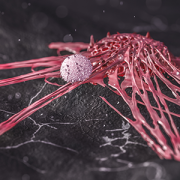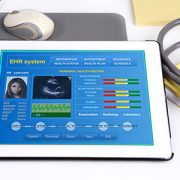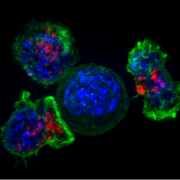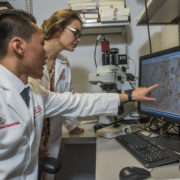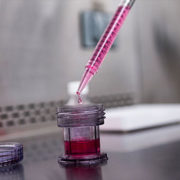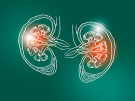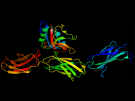Alpha/beta T cell depletion lifts barriers to transplantation

Removal of A/B T cells from the infused cell product significantly minimizes the risk of GvHD and eliminates the need for immunosuppressive medications after transplant.
Alpha/beta T cell depletion (A/B TCD) is a cutting-edge hematopoietic stem cell transplant (HSCT) technique by which donor derived immune cells, called A/B T cells, can be removed by selectively using magnetic beads before the donor cells are infused into the recipient’s body. A/B T cells have the potential to cause life threatening inflammation in the recipient’s body, called graft-versus-host disease (GVHD). GVHD is a major complication after transplant, especially when the donor is not fully matched. Therefore, removal of A/B T cells from the infused cell product (graft) significantly minimizes the risk of GVHD and eliminates the need for immunosuppressive medications after transplant.
Unlike previous methodologies that completely remove all immune cells, the novel A/B TCD approach preserves beneficial immune cells (like gamma delta T cells, natural killer cells, monocytes and dendritic cells) in the graft to preserve the capability to fight viral infections and residual cancer. Therefore, this innovative transplant approach can cure leukemia while decreasing the risk of life threatening infections and relapse after transplant.
In this Q&A, Anant Vatsayan, M.D., blood and marrow transplant specialist at Children’s National Hospital, tells us more about this new exciting technique.
Q: What is the specific research question that you are hoping to answer?
A: Children’s National Hospital is participating in the largest multicenter pediatric trial of A/B TCD hematopoietic stem cell transplant in the United States. The primary objective of this research is to assess whether disease-free survival at one-year after-HCT for children with high-risk leukemia and myelodysplastic syndrome can be improved with A/B TCD hematopoietic stem cell transplant.
Patients with other types of blood disorders may also be eligible to undergo A/B TCD hematopoietic stem cell transplant in this study based on the discretion of the principal investigator. The study will also assess the overall survival and rates of acute and chronic GVHD. Another objective is to compare the cost of transplantation using half-matched (haploidentical) donors versus other stem cell sources (for example, matched unrelated adult donors or cord blood donors) at participating centers.
Q: Why is this work exciting?
A: A/B TCD hematopoietic stem cell transplant has several benefits:
- One of the remarkable benefits of this technique is the possibility of using haploidentical related donors for transplant if a fully matched related or unrelated donor is not available. This is a common scenario for patients of certain races (African American) and ethnicities (Hispanic) where it is difficult to identify a fully matched unrelated donor. Therefore, A/B TCD hematopoietic stem cell transplant expands the pool of donor options and ensures more equitable donor availability across every race and ethnicity.
- A/B TCD significantly decreases the risk of severe GVHD and post-transplant infections. It eliminates the need for post-transplant immunosuppressive medications (like cyclosporine, tacrolimus or sirolimus) that can have numerous side effects and require frequent monitoring of drug levels in the blood.
- The A/B TCD technique also promotes faster recovery of blood counts (engraftment) after transplant. Therefore, patients take fewer medications, have shorter durations of hospitalization for transplant and need less frequent blood tests and clinic visits after transplant. Hence, this patient friendly and family centric transplantation strategy will ensure that patients can spend more time with their family and have a better quality of life.
Q: How do you hope this will benefit patients?
A: Alpha/beta T cell depleted HSCT using half matched (haploidentical) donors will ensure donor availability for almost every patient regardless of race/ethnicity and probability of finding a matched related/unrelated donor. This methodology has tremendous prospects for wider applications, including the use of matched related and unrelated donors with the intent to eliminate the need for post-transplant immunosuppressive medications. This could be especially beneficial for patients with Fanconi anemia or other patients who are at risk of developing severe side effects from the use of immunosuppressive medications.
Q: How unique is this work?
A: The Shirley and William Howard Cellular Therapy Laboratory Stem Cell Processing program processes stem cells and performs cutting edge clinical trials while providing innovative care for patients. This work benefits from access to CliniMACS Plus Cell Selection Device, along with a multidisciplinary team with laboratory and clinical expertise to perform A/B TCD hematopoietic stem cell transplant. Access to our state of the art Cellular Therapy Laboratory allows us to further complement this transplantation strategy with other cellular therapies after transplant, such as virus specific and leukemia targeting T cells, which further mitigate the risk of post-transplant viral infections and leukemia relapse.

